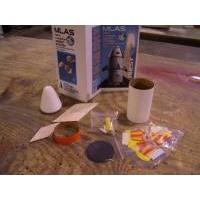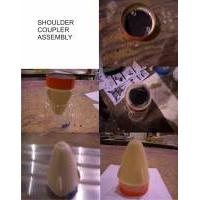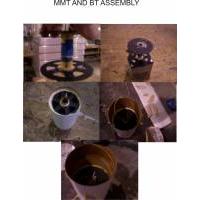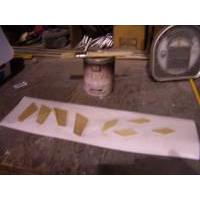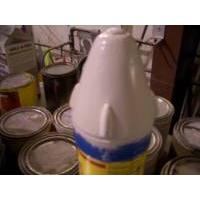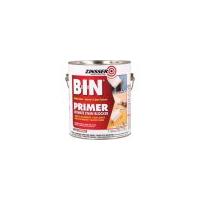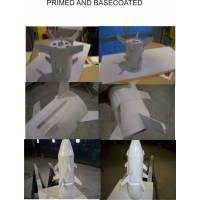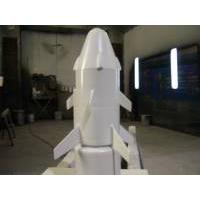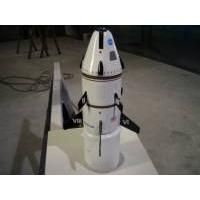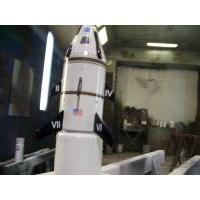| Construction Rating: | starstarstarstarstar_border |
| Flight Rating: | starstarstarstar_borderstar_border |
| Overall Rating: | starstarstarstar_borderstar_border |
| Published: | 2011-01-27 |
| Diameter: | 3.46 inches |
| Length: | 9.00 inches |
| Manufacturer: | Quest  |
| Skill Level: | 3 |
| Style: | Scale |
Brief
My son and I were on our most recent trek up to Stevensville to see Dave at Red Arrow Hobbies (http://www.redarrowhobbies.com/) to pick up some kits he had ordered up for us for a Cub Scout build event. My son was cruising through the inventory, and yes it is nice to have a ‘real’ rocket/hobby shop to actually physically walk into, checking out all the different kits and kept gravitating back to the little white boxes with this stubby little design on it.
This is a 'second take' review on the Quest MLAS kit. I wish I would have read the first review prior to completing mine as I could have had a chance at making some 'adjustments' to the build to accomodate similar findings.
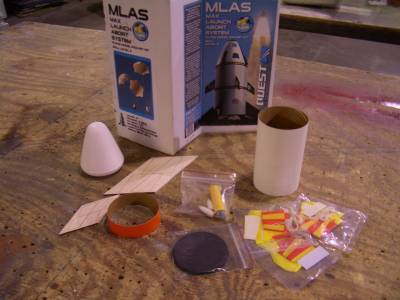 The MLAS kit includes:
The MLAS kit includes:
- A 25-step, 12-page set of instructions
- 3.5” diameter 5.5” length BT
- Shoulder ring
- Laser cut centering rings and balsa fins
- Foam nose cone and pods
- Typical Quest 18MMT setup
- Kevlar chords and elastic, typical Quest style shock harness
- 1/8th LL 3” length
- Lag bolt for nose weight
- Decal sheet
Use alphatic (carpenter’s) glue, although in retrospect I would have used very minimal amounts and possible gone with white glue on the BT elements after seeing the way the BT reacted.
Make note of the foam parts. Make sure whatever you use for filling and finishing is compatible. Working with foam and what it brings to the table is stressed a few times in the instructions. The watered down wood filler technique explained in the instructions works well for fill work on the foam parts.
The body tube is very light there are pros and cons to this as expressed in the build.
Construction
As with all kits, especially with a Skill Level 3 such as this, we read the instructions completely BEFORE we did anything. There are always a few steps in the assembly that can be 'shuffled' about to make the build more efficient.
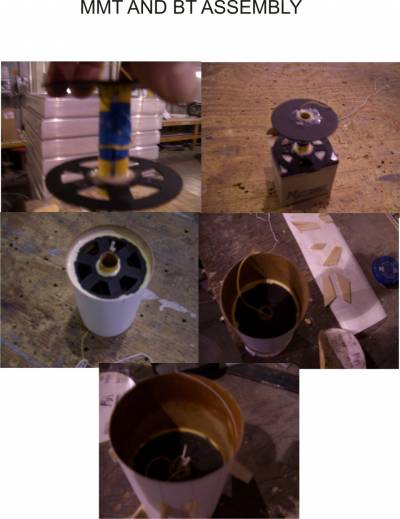 The kit starts with the MMT assembly. Standard 18mm thrust ring and hook assembly with the Kevlar attachment point. The centering rings can be a little tricky at first to hold the alignment, but actually will be a quick and simple process to complete. Make sure they are square and test fit everything.
The kit starts with the MMT assembly. Standard 18mm thrust ring and hook assembly with the Kevlar attachment point. The centering rings can be a little tricky at first to hold the alignment, but actually will be a quick and simple process to complete. Make sure they are square and test fit everything.
The next step will be to insert the MMT assembly into the BT.
The last picture in the sequence shows the upper section of the BT with a layer of CA brushed on it and sanded smooth. The BT material is very thin and flimsy in this kit. The carpenter’s glue will draw the paper in unless you apply very minimal amounts. More pictures of this effect on the BT will be seen later in the build. I may try to apply CA before I insert a MMT to see if it still has the same drawing effect in the future on a different build.
On this page of the instructions there is the ghost image of the fin alignment pattern. Of Note: there is no marking on a pattern for the launch lug anywhere in these instructions. Now is a great time to make this observation and allow for one. Also you might be inclined, as I have a habit of doing this myself, to mark your BT for fins before you glue in the MMT…. WAIT! The MMT will help hold the very thin BT in shape for a nice marking, otherwise your lines will drift and not be perpendicular.
I found it very handy to have an empty pickle jar around to set components on to dry throughout this build. It is great when dealing with the engine hook and the nosecone assembly when you get to that point. After this assembly dries in the down position, set it into the jar which will rest on the aft CR allowing for a nice hands-free fillet to be applied to the upper section.
After you have this all assembled, marked, and set aside to dry, the fins become the next priority.
I changed the order of progression after reading the instructions completely. I started the fins and nosecone first as they have multiple phases of "coat and let dry" techniques.
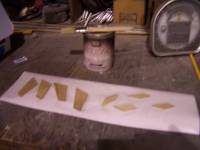 Using the tried and true "stack and sand" for the balsa fin prep I moved on. The next steps, according to the instructions, are to start gluing the fins on and applying fillets. Although this will work, I don't suggest it and didin't do it. Instead, I worked backwards as do many other builders out there. After the stack and sand, I use a sanding sealer, applying 2-3 coats on each side of the fins (yes, I let each coat dry completely first), and then I lightly sanded them off with a 220 grit paper before attaching to the body tube.
Using the tried and true "stack and sand" for the balsa fin prep I moved on. The next steps, according to the instructions, are to start gluing the fins on and applying fillets. Although this will work, I don't suggest it and didin't do it. Instead, I worked backwards as do many other builders out there. After the stack and sand, I use a sanding sealer, applying 2-3 coats on each side of the fins (yes, I let each coat dry completely first), and then I lightly sanded them off with a 220 grit paper before attaching to the body tube.
Note: The instructions suggest using watered-down wood filler as a coating for the fins after they have been attached. This has already been done if you use sanding sealer. As far as the attachment of the fins with alphatic (carpenters) glue, there will be some shrinking of the fillets. I use the watered down filler to smooth these fillets, not as a primary coating on the fin itself.
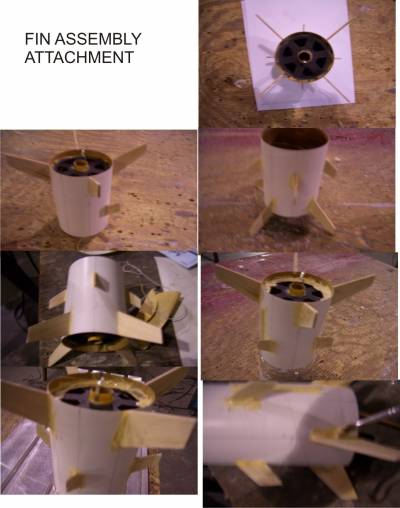 For fin attachment, I followed the order as stated in the instructions. For gluing, I personally prefer (it is just a preference and mainly for time saving purposes, but I digress) a different technique as well. I lightly scuff the line where the fin will attach with 220 grit sandpaper and use CA (super glue) on the root edge of the fin for attachment to the paper tube. I then follow this up with a fillet of carpenters glue and then the watered-down filler to even out the glue shrinkage on each fillet.
For fin attachment, I followed the order as stated in the instructions. For gluing, I personally prefer (it is just a preference and mainly for time saving purposes, but I digress) a different technique as well. I lightly scuff the line where the fin will attach with 220 grit sandpaper and use CA (super glue) on the root edge of the fin for attachment to the paper tube. I then follow this up with a fillet of carpenters glue and then the watered-down filler to even out the glue shrinkage on each fillet.
Now, moving on to the nosecone assembly. It is foam, so be careful with it and be patient. Assemble the shoulder ring and cap as instructed. Set aside to dry. 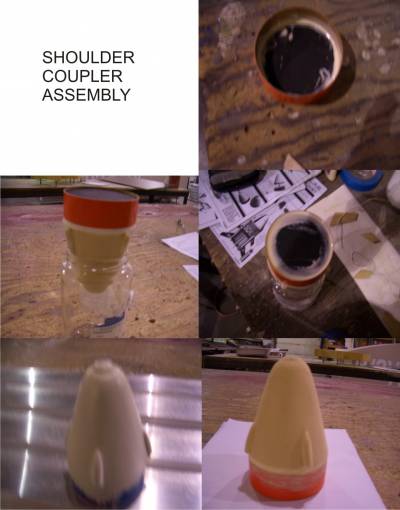
You will be next instructed to attach to the nosecone. I did not do this until after the majority of my fill work and sanding was done on the foam.
For the foam capsule, I used the thinned down filler and brushed it on liberally. Actually, I started with it thick and then used a damp brush to smooth it off and spread for the first coat. Then I sanded with 220 and repeated until there was a nice even coating on the entire exposed foam surface. With the amount of coating and sanding required, I worked on this as the rest of the assembly was in progress.
The two pods, or small nosecones, must be cut in half and coated as well. I only coated the exterior surface as these will be glued to the main capsule as boosters later. Once I had a shell of filler, I moved on to adding the bolt to the top, marking the boosters, and gluing them to the surface.
Once these were added, another coat of the dampened filler was applied and smoothed to shape. The shoulder coupler was then glued to the base of the capsule as instructed and set upside down in the pickle jar to dry.
Finishing
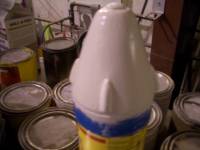 Once dry, the paint prep continues. For a foam safe primer, I used BIN (http://www.rustoleum.com/CBGProduct.asp?pid=216) It is a shellac-based, very quick-drying primer and accepts almost any topcoat. For this build I brushed it on the nosecone assembly allowing it to fill small voids and develop into a nice sealing coat.
Once dry, the paint prep continues. For a foam safe primer, I used BIN (http://www.rustoleum.com/CBGProduct.asp?pid=216) It is a shellac-based, very quick-drying primer and accepts almost any topcoat. For this build I brushed it on the nosecone assembly allowing it to fill small voids and develop into a nice sealing coat.
I used a standard auto primer spray bomb for the body assembly.
In these pictures you ca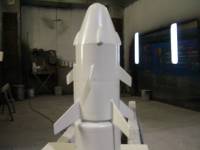 n see the two ‘rings’ where the CRs are and the pulling effect the glue had on the exterior surface. I build mainly mid- and high-power rockets so my instinct to overglue probably was a contributing factor in this combined with the very light body tube in this kit.
n see the two ‘rings’ where the CRs are and the pulling effect the glue had on the exterior surface. I build mainly mid- and high-power rockets so my instinct to overglue probably was a contributing factor in this combined with the very light body tube in this kit.
I added a full basecoat of flat white.
Then. I let my 8 year old apply the waterslide decals. 
He did alright - he only trashed one. The horizontal stripes are a bit more brittle than a regular shaded decal because of the colors used. All in all, it turned out pretty good. I'm proud of the little guy for staying with it and learning how to use a brush to move them around.
My son finished it up with a brush and some spray-bomb clear.... Not bad for an 8 year-old on the final finishing, decals / touch up, and clearing that is!
Pros: The compnents finish nicely and the kit looks sharp when complete.
Cons: Make sure your paint is compatible with foam, be careful with the stripes on the decal sheet as they can be a bit brittle, a tape and brush technique may be better than tape and spray as instructed.
Construction Score: 4
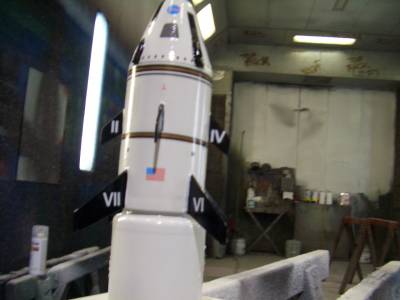
Flight
We flew it on the recommended B6-4 and, as stated prior in other flight logs, it is very succeptible to weathercocking. The first 75' was pretty good then she rolled and kicked a bit. Deployment was a little scary, but who wants to live forever right?!? A little thril' at apogee is quite common at a launch and can lead to some very entertaining playcalling by the spectators! Mine is an ounce heavy. I should use a -2 for a delay.
No damage on recovery.
All in all, marginal stability but within reason for such a stubby kit. I wouldn't fly her if there is a consistent breeze over 5mph or so - definitely not on a windy day.
Recovery
No damage on recovery.
Summary
I think this is a cool little kit.
Besides the light BT, some of the hilarious typos on the box (yes, there are some letters missing - like 't's' in "flight"), a few questionable areas in the instructions, and the smaller scaled-back low-power build techniques, I found this a fun build. A Skill Level of 3 is well-deserved for it IMHO.
Working with the foam nosecone was a real treat.
Finishing is a task, but a real treat if you enjoy that part of the hobby, as I do.
Would I recommend it to anyone? Yes.
I enjoy Quest products, especially for the kids. This is the first time I have tackled one of their Skill Level 3 kits and really had a good time returning to the low-power techniques and building outside of 3FNC types.
But, do make note of other's past experiences in building one of these. I wish I had read some of the reviews and experiences of others before I was almost finished with mine.
Other Reviews
- Quest MLAS By Dick Stafford (November 16, 2009)
Brief: This is semi-scale sport model based on NASA's Max Launch Abort System (MLAS). It is quite stubby, being 3.5" in diameter and a mere 9" long. It has only one recommended motor, the B6, and recovers in two parts on three parachutes. NOTE: Two RockSims were submitted. One is the stock build and one has added nose weight. You should assess the stability of your own ...
 |
 |
Flights
Sponsored Ads
 |
 |

